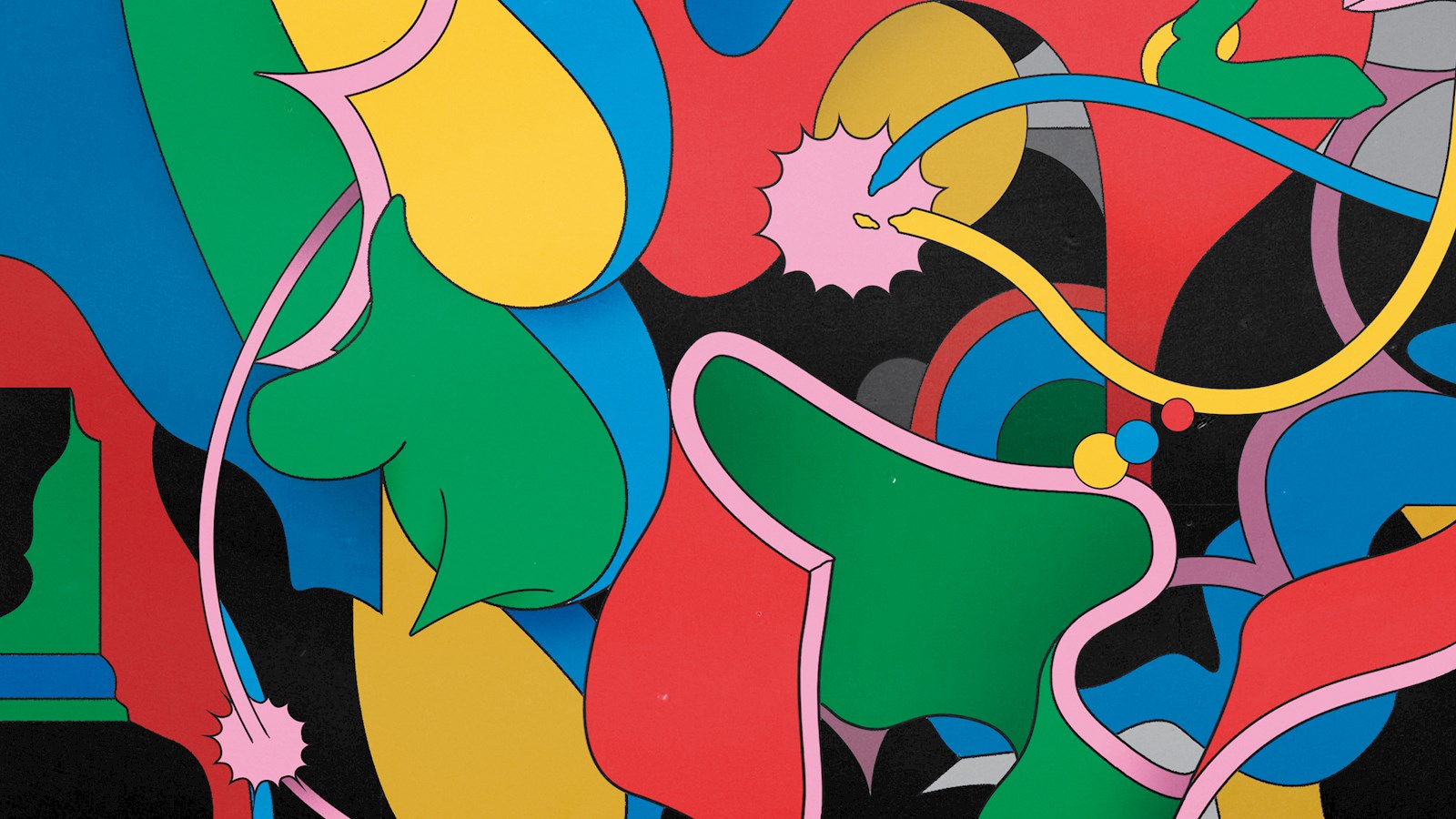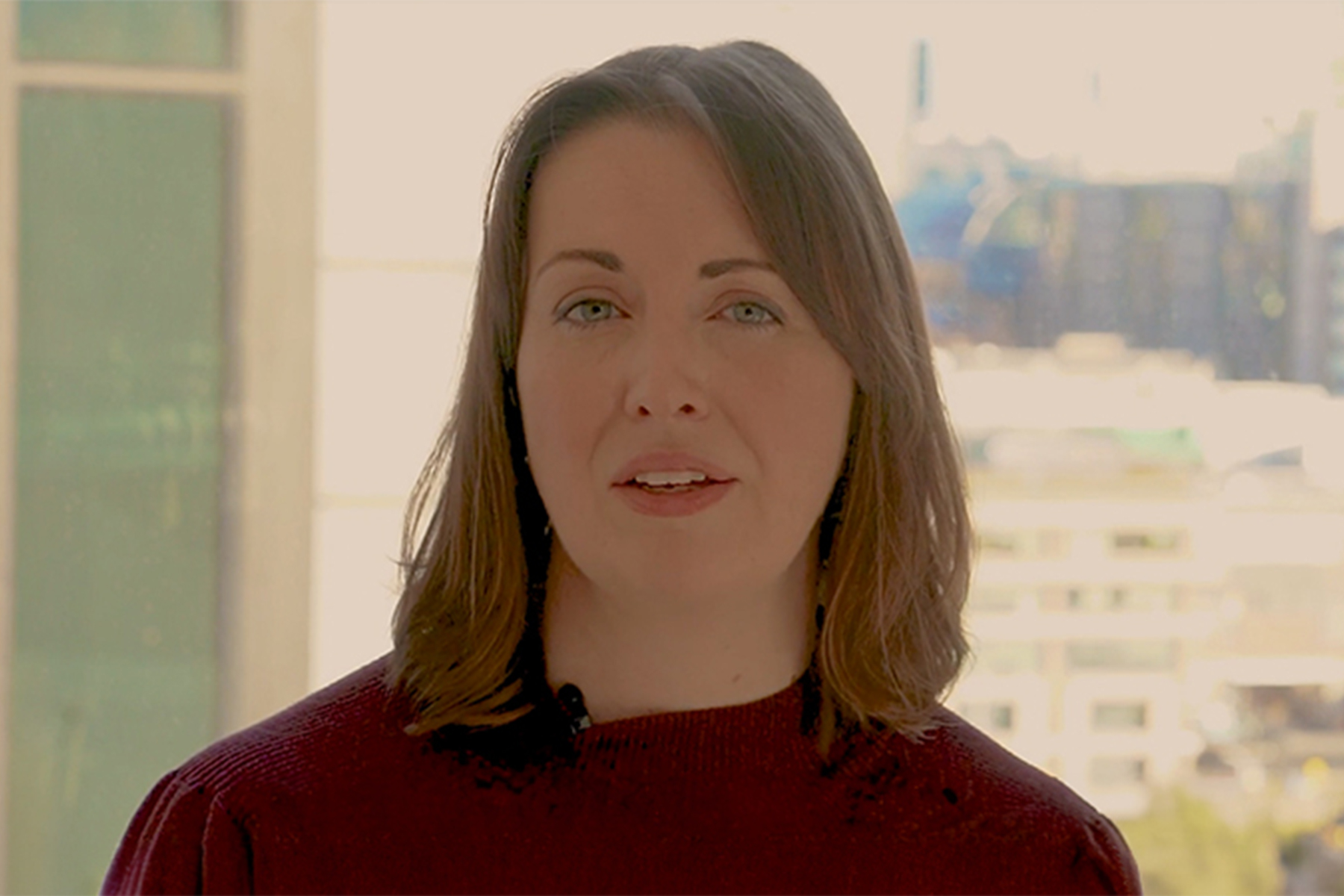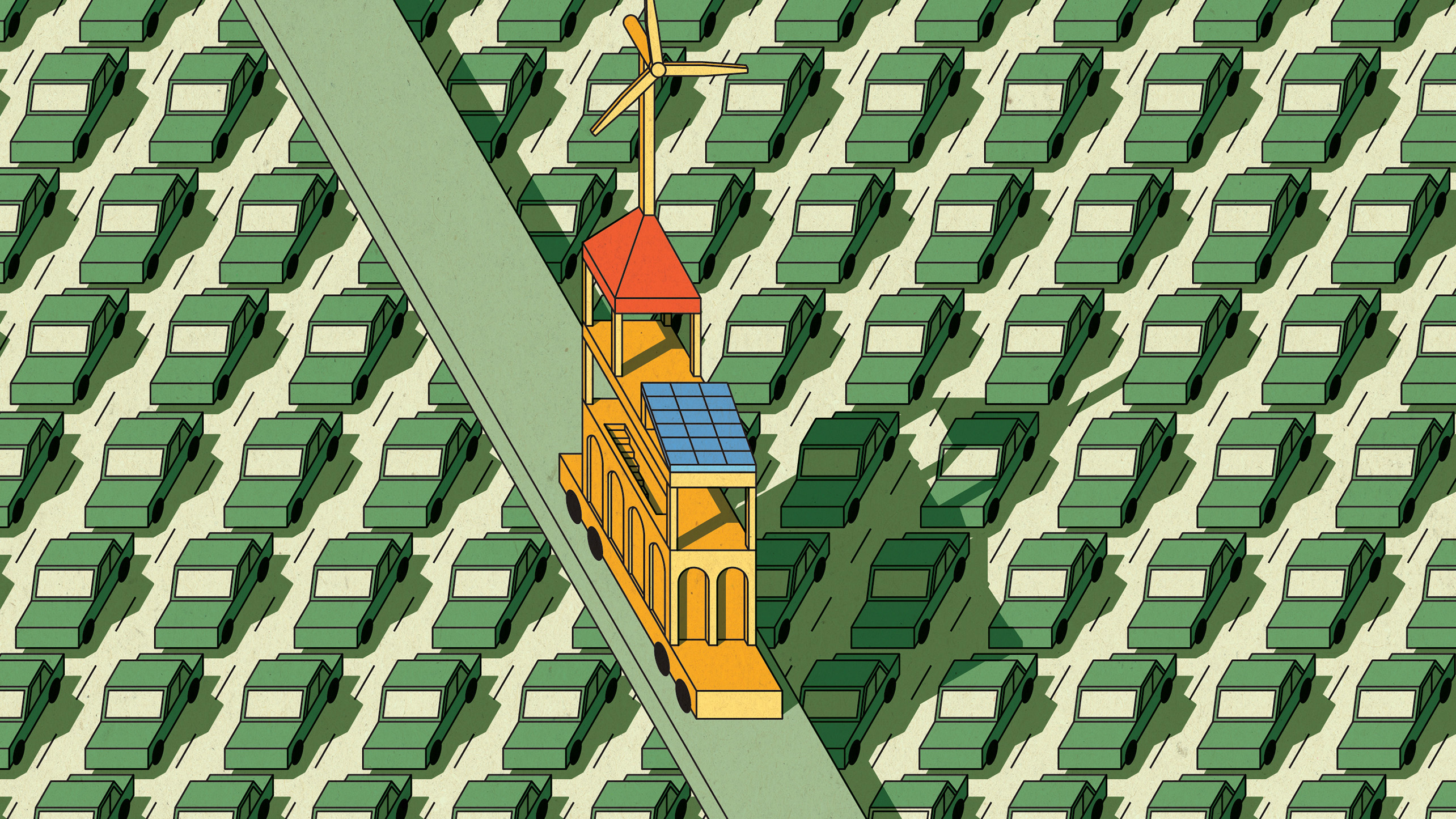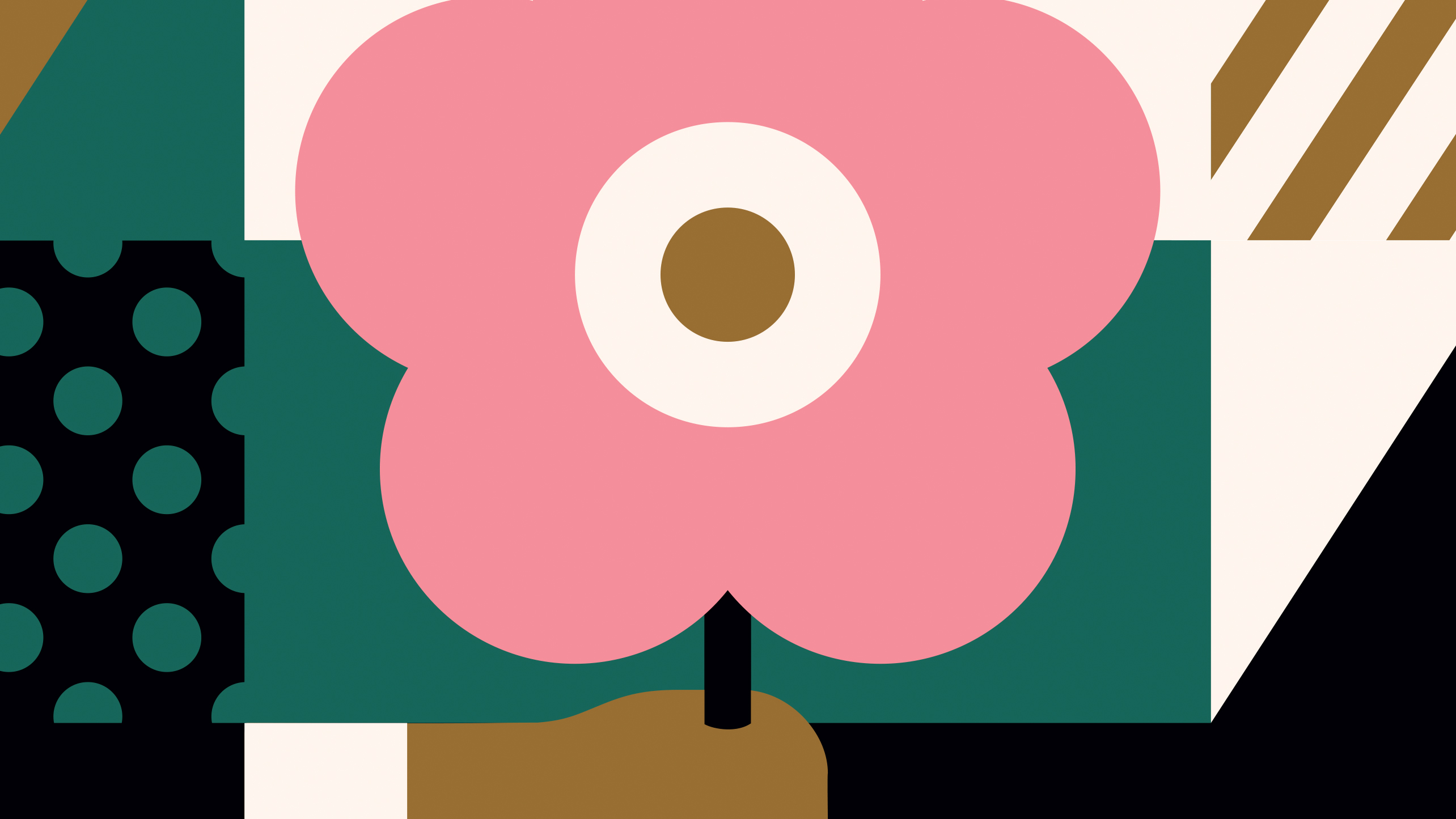
The social rhizome
A more organic and anarchic social media that is more akin to lived experience would empower us all
In this post-COVID-19 world, close your eyes and imagine the last hug you received. Recall the feeling of being held – that physical connection with another person’s body. Now take the bodies away but keep the feeling. Let’s take it as the North Star of our new social media.
A decentralised, non-hierarchical, thoroughly interconnected system where there is no direction, no centre, and no permanent structure, is how Deleuze and Guattari described a rhizome, in their landmark philosophical work A thousand plateaus 1. This system is opposed to a tree-structure, which is linear, one-directional and static.
Accessing the unexplored through the random pathways the rhizome provides is the true mimicry of the physical world, where intuition and inspiration follow word-of-mouth and chance.
Deleuze and Guattari projected the internet as a rhizomatic structure long before it took that form. The internet as we browse it today still stands in its anarchy of horizontal connections, despite its limitations and the nudges towards a more hierarchical tree structure (to the extremes of censorship and post-truth). It is an imperfect rhizome, undeniably, but surely it is more similar to one than to a tree.
A shared virtual 3D world
Yet, even if that is the structure of the internet as a metaverse – a shared virtual 3D world, first envisaged by science fiction writer Neal Stephenson – it doesn’t mean it replicates correspondingly in micro areas, such as social media 2.In fact, social media tends to be far more disciplined, from the basics of moderation to the extreme of content control. These measures are, of course, necessary, as they contribute to creating a space that is somewhat safe. What safe means, however, is something that social media is left to decide on its own. This alone is enough to break the possibility of a rhizomatic space: there is a hierarchy, even if accepted in exchange for safety.
This form of control is merely the most obvious feature of the tree structure of contemporary social media. The two key points that are incompatible with a rhizomatic experience also relate to structure:
First, people with a social media account are – at the same time – users and employees. They are, in other words, making the content they are paying for. How does that reflect how connections in the physical world work?
The second point relates to tailored content. In the physical world, flowers don’t grow next to us because we say we like them. If we want to see flowers, we go to a garden. If we’ve never seen flowers, we will discover them by crossing a park for the first time – as life happens to everyone, even the uninterested. The social tendency of arranging content for a second purpose, such as placing vending machines outside gyms, entered the metaverse with the implementation of algorithms and cookies. These tools are the equivalent of chopping off the rhizome, as they artificially select connections.
The chaos of stimulation
In the metaverse, humans will actively seek what they want – and they should be able to randomly find new content through the principle of serendipity, surfing skilfully on the chaos of stimulation that the living experience is. Accessing the unexplored through the random pathways the rhizome provides is the true mimicry of the physical world, where intuition and inspiration follow word-of-mouth and chance. In the world of communication, the new challenge would be: what is the best way to make content accessible and ready for fruition?
Which brings us to the very structure of our new social media: what are the connections? What are the nodes? The revolution of rhizomatic social media would have nodes as themes, and not people. For social media to be a true rhizome, we have to picture a platform where it’s not information that travels, but users; where all the topics are connected, and it’s the users who walk around. Maintaining its rhizome nature, this map of connections itself is then mixed, twisted, and reinvented by that very movement of people. Just as culture is.
The key to achieving the connection we took as a North Star needs a dynamic of horizontal hyperlinks. (In this context, horizontal means former parent categories need to be correlated with, and not standing above, the travelling information – that is humans.) What does this mean in practical terms? It means that the user is not profiled, and humans are not defined through a list of hierarchically ordered qualities (which would pin them down) but are rather allowed to wander freely – and thus be not defined by, but expressing, their identity in a fluid way.
Hence, on rhizomatic social media, we are not parenting engineers, but engineers and parents – present, in the same way, in different nodes at the same time. This also contributes to pacifying the oxymoron of simultaneity on the metaverse, where we used to feel our split presence incompatible with the reality of having a singular experience in the physical world. When walking the rhizomatic social media, this augmented space would finally allow us not to split, but to extend, in a number of dimensions proportional to our complexity as human beings.
We have to picture a platform where it’s not information that travels, but users; where all the topics are connected, and it’s the users who walk around.
The connectedness of all things
As to where all of this is happening, we might be asking ourselves the question: where is this coming from? What is the original shoot of this rhizome? Interconnectedness constitutes an indispensable pillar of this structure. Through it, we are able to grasp a big picture. But how is it that all things are connected? What are they all connected by? They are all happening on this planet.
More than any other model structure, rhizomatic social media in a rhizomatic metaverse would reflect, through the magnifying glass of simultaneity and multiplicity, what we used to call the butterfly effect – whereby small acts can have major consequences – and the fact that we live and struggle inside a closed system. Hardly anything else would empower us more than tapping into this awareness through our social interactions – once the real encloses physical and virtual, and these ultimately achieve the same dignity. It is the only way forward.
|
published on
15 December 2021
More in The Atticus Journal

Generative AI: mitigating risk to unlock opportunity
H+K’s Allison Spray on managing the commercial and reputational risks that the proliferation of generative AI will present

Making sustainability profitable
Sustainability investments must deliver returns – both financial and reputational – to be ‘sustainable’ for business. Something needs to change, says Luc Speisser

Sustainability comms must get real
There’s a disconnect between the way corporations talk about climate change and how the public discusses the same issue. That’s the conclusion of research by Jamie Hamill, Alessia Calcabrini and Alex Kibblewhite.

